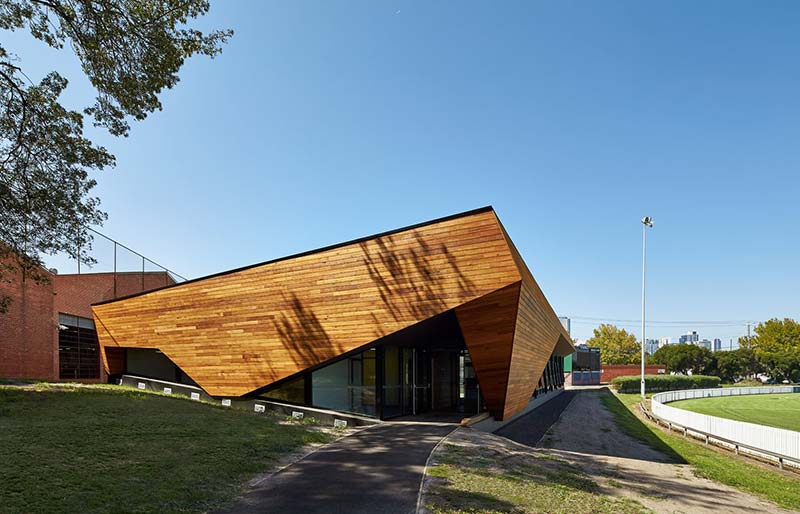
The building was commissioned by the local City of Port Phillip council to provide a multipurpose space accessible to all. The project was jointly funded by the Australian Football League (AFL), AFL Victoria, Sports & Recreation Victoria and the City of Port Phillip and was delivered within a tightly controlled fixed budget.
Situated on the Northern corner of the North Port Oval, the pavilion was designed to provide new headquarters for the 129-year-old Port Melbourne Football Club. The program includes a 200-person capacity function room, administration offices and stores, meeting and conference rooms and a commercial kitchen and bar.
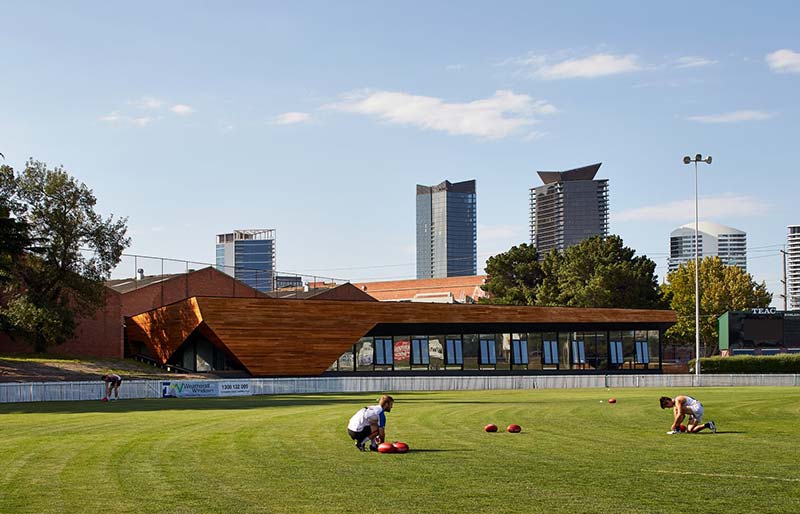
Embedded in the hillside, the form of the building echoes the raw industrial context of the vernacular seen in the local context of Port Melbourne. This is also reflected in the materiality as the exterior is made up of a minimal palette of concrete, glass, wood and steel. The timber cladding both interior and exterior serves a dual purpose to conceal and reveal the program within as well as retain the amount of glazing required as budget constraints for the project meant glazing was devoted primarily to the viewing space. The ‘V’ form that appears on the East and South elevations was adopted as a subtle reference to the buildings purpose as home to VFL and its form was used to enable the building to lift and rise to secure view lines through the building to connect people with the game.
The building provides universal access and a new street presence to the sporting precinct via an accessible timber cladded pathway that zigzags its way through the camber of the hillside and connects to the pavilion entry. The building itself is made up of two parts connected by a pathway which delivers and connects visitors through the building to the sporting precinct beyond.
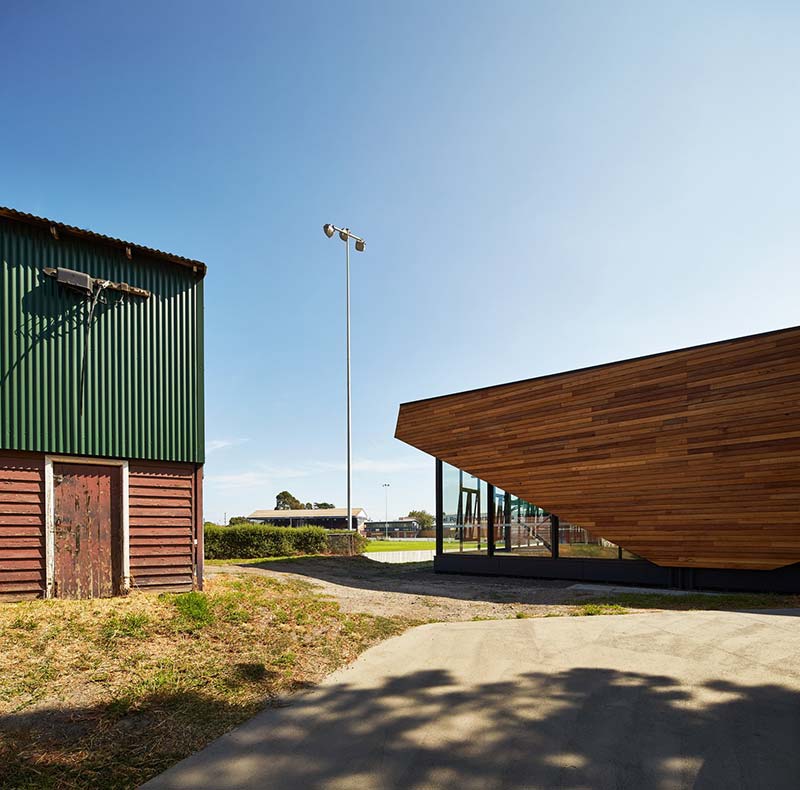
The rear part of the pavilion reflects the industrious nature of its interior program – amenities, kitchen, stores and cool rooms. The front part of the pavilion is clad in Stringy Bark and shaped around the internal program of social spaces. What appears at entry to be a flat shed like form opens up to give 180 degree vista of the North Port Oval with floor to ceiling Low-E openable glass windows to ensure unobstructed views to the on-field activities from the comfort of the inside.
Timber is used throughout the structure and the cladding systems are designed to provide cost effective outcomes using standard off the shelf locally sourced materials and components. The project was in turn designed to enable local labour to skillfully assemble and construct the building relying equally on locally available technology.
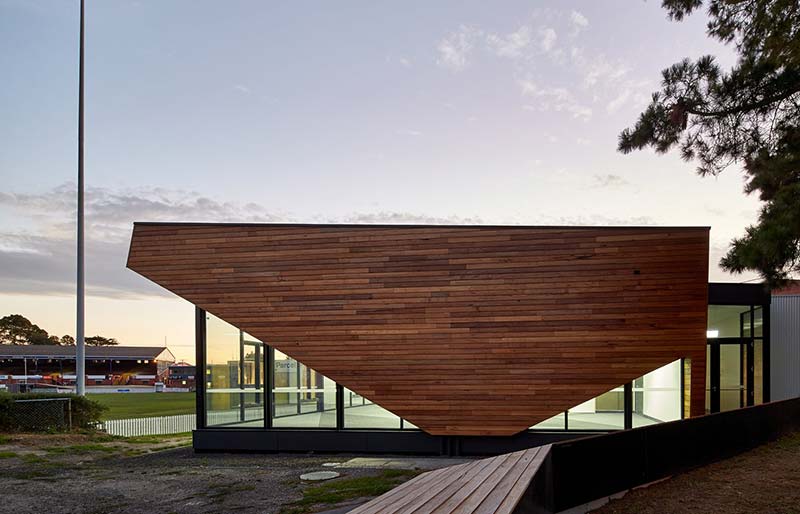
The building construction methodology adopted sustainably sourced Stringy Bark timber- a high carbon sink material, and was designed to provide high levels of local content and local labour. The lighting layout and carpet design are fractal like expressions of paths that travel through the building from various entry points and echo the paths a player might travel across the playing field during a game of football.
ESD Features:
Port Melbourne Football Club Sporting and Community Facility was recently awarded winner of the 2015 National Timber Design Awards Sustainability category. The building includes low energy light fittings, sustainable plywood linings and extensive use of plywood in place of plasterboard, with the use of plasterboard limited to the administration offices.
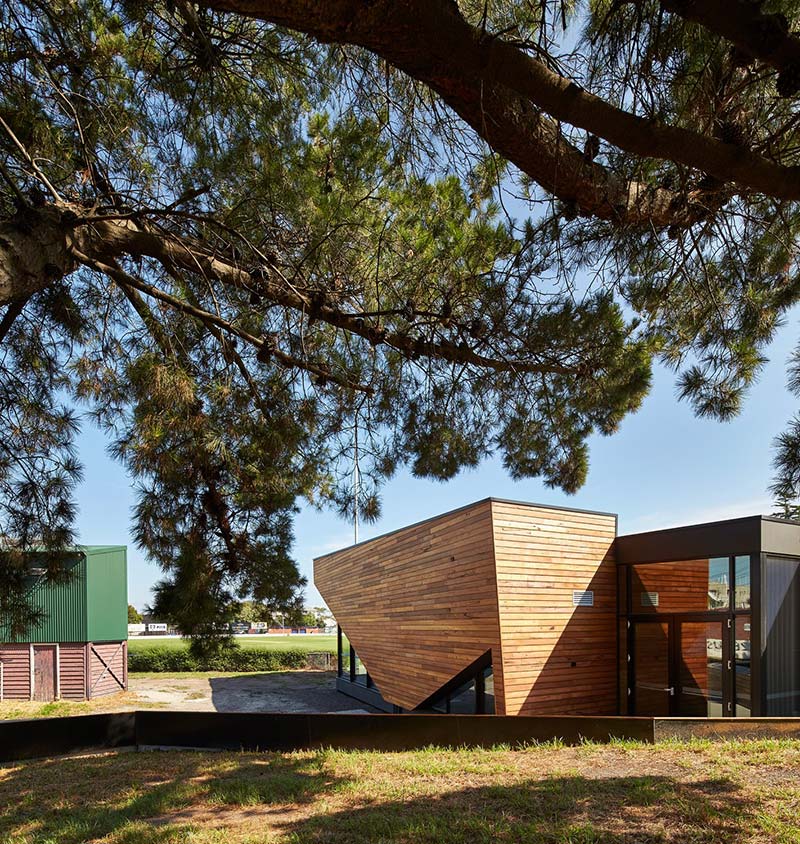
Further ESD initiatives included incorporating underground rain water tanks for toilet cisterns and landscape irrigation, solar hot water units, exhaust systems with makeup air, low energy and high performing mechanical supply air conditioning systems. The building is also highly insulated, exceeding minimum standards and includes double glazed thermally broken glazing systems.
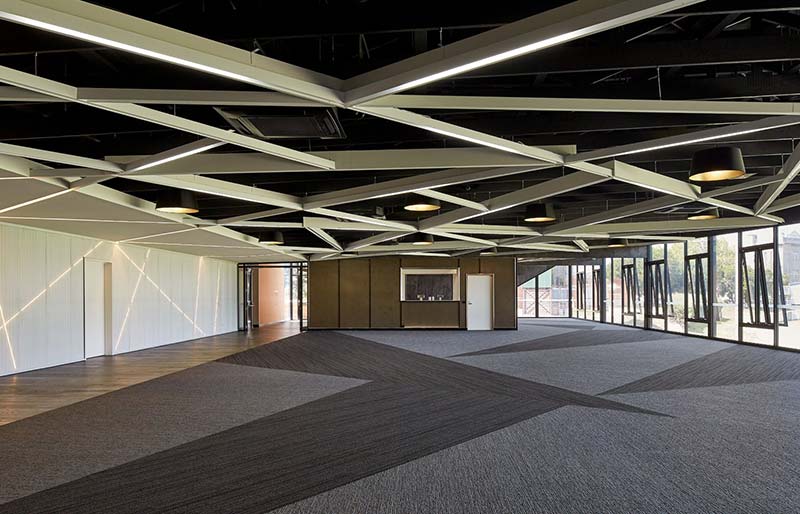
The design solution around this high efficiency rate included the use of an open trussed ceiling, open ceiling grid system incorporating customised lighting using off the shelf items, perforated metal feature panels that double as acoustic treatments and material selection preferences locally made by off the shelf building materials. Sustainably sourced material selections included modular carpet tiles with 90% post-consumer content backing, certified by CRI Green Label Plus. Engineered timber flooring with low maintenance and low VOC coating suited to chemical free cleaners were also adopted.
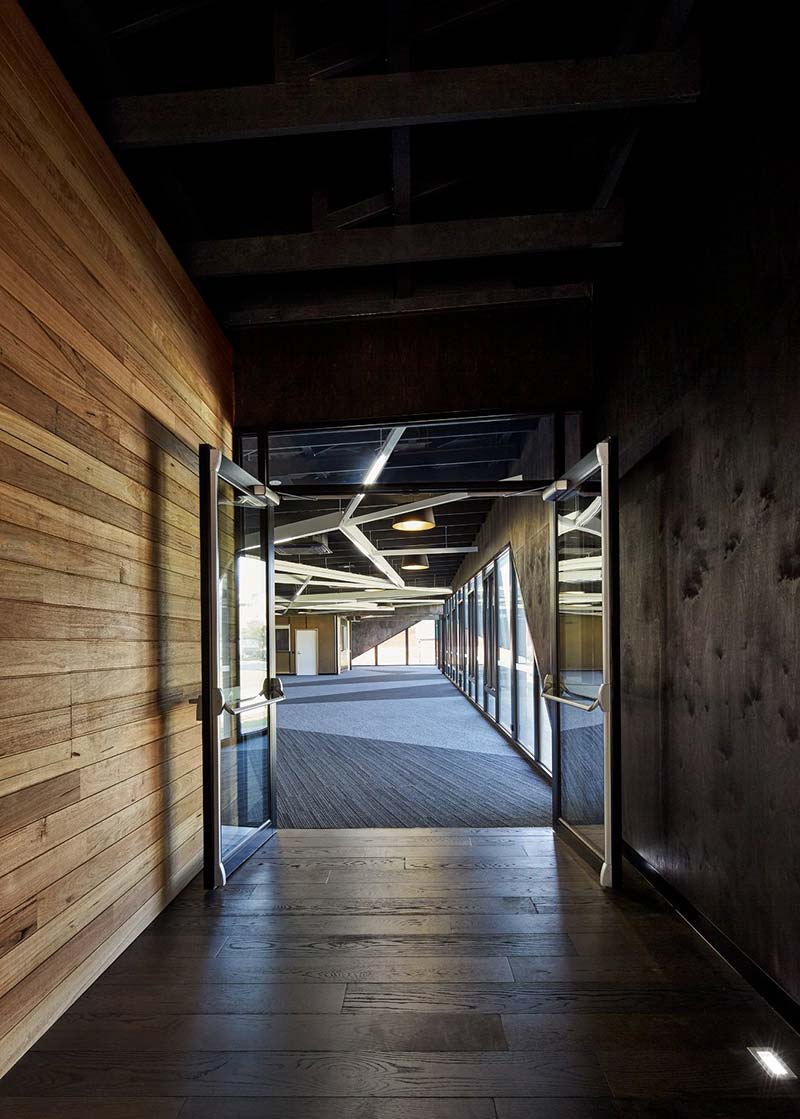
The project was designed around the retention of all healthy trees and those trees which were assessed as unhealthy by Council’s Arborist where removed to make way for the building. Each tree in turn was replaced with 7 new trees that were planted across the site. Contaminated soil on the site was re-used and re-blended to clean fill status. The soil was relocated to other parts of the site thereby diverting landfill impacts whilst reducing the associated costs of relocating soil as contaminated soil.
The project achieved an exemplar rating using the Sustainable Tools for Environmental Performance Strategy (STEPS) scorecard.
Project Details:
Location: Melbourne, Australia
Type: Sports – Public
Architects: k20 Architecture
Photographs: Peter Bennetts


